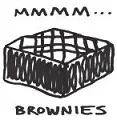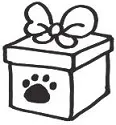ONE
Meaning
If you follow the winding cobblestone streets where hip downtown Seattle meets the bustling public market overlooking the Elliott Bay waterfront, past the fresh seafood, fruits, vegetables, specialty breads, artisan oils, handmade jewelry, street musicians, and saltwater taffy, you’ll find a Starbucks.
As the joke goes, there’s a Starbucks on every corner. In Seattle, that’s pretty much true, as Starbucks has 23 coffee shops for every 100,000 residents, the most per-capita in the United States.1 But the Starbucks I’m standing in front of at 1912 Pike Place is no ordinary Starbucks: it’s the very first Starbucks. I interact with Starbucks at some level every day. From the coffee I make at home to the drive-throughs, walk-ins, and quick kiosks inside grocery stores and hotels. While in Seattle, I had to make time in my schedule to see the first Starbucks. I am not alone.
A line at Starbucks isn’t that out of the ordinary. As a consistent drinker of “coffee black,” I often grumble in line behind other, time-consuming, complex orders that sound more like an ice cream sundae than a cup of coffee. The line at the first Starbucks is out of control. It snakes out the door and down the block. Once inside, as you gaze at framed newspaper articles and vintage coffee bean sacks—trappings you might find in any original small business location—the line forks. There’s a line that sorts into three registers where you order drinks and souvenirs from this sacred place. And another line for those waiting for their coffee. There’s an employee directing traffic.
As I stood there taking it in, I was looking for something. Something different and amazing. Outside of the line, nothing was that remarkable about the store. It was a Starbucks. All the people making this store a part of their day, a part of their vacation or work trip, a part of their life was what was different. Maybe they were all looking, too.
That’s because Starbucks means something to us.
Logos, Logotherapy, and Brownies
After one of my talks about branding, I’m often met offstage by people with their chests puffed out and a big smile on their face. They lean forward with pride and say, “We just rebranded.” As they rock back, they add: “Ye-e-e-e-ep. We just redid our whole logo.” With an awkward grin frozen on my face, I nod along and look for a way to change the subject. “Where did you get that brownie?”
That’s because it takes all of my powers not to conjure Mandy Patinkin’s Inigo Montoya from The Princess Bride, whose second most iconic line states in response to another character’s continued use of the word inconceivable, “You keep using that word. I do not think it means what you think it means.”2
Branding is your logo, right? If your brand’s broken, you must need a better logo. If you’re looking to reinvigorate your brand, try a jazzy new logo. Why does everyone make this branding stuff so hard?
This thinking is, of course, shortsighted. Your brand is so much more than your logo. And that’s what we’re going to look at as we unpack the seven Brand Now Dynamics. At the risk of confusing you, logo is a good place to start. Or more specifically, its root, in the Ancient Greek logos.
Actually, logos meant a lot of things in Greek including “ground,” “plea,” “opinion,” “expectation,” “word,” and “discourse.”3 It became a more technical term as the philosopher Heraclitus used the term for a principle of order and knowledge. Logos is the logic behind an argument. Persuade an audience using logical arguments and supportive evidence. Logos helps us unlock meaning.
And meaning matters. A thinker who means a lot to me is Viktor Frankl, an Austrian neurologist, psychiatrist, and Holocaust survivor. His own hellish experiences led him to discover the importance of finding meaning in all forms of existence, even the most brutal ones. Frankl went on to found logotherapy. I initially assumed logotherapy was a cool psychological grounding for branding and logos. I was slightly let down to discover that it’s actually a form of existential analysis. As it turns out, it can help us, too.
One of logotherapy’s key principles asserts that our main motivation for living is our will to find meaning in life. According to Frankl, one of the ways in which we discover meaning is by experiencing something or encountering someone.4 Which brings us back to brands.
We are overwhelmed by stimuli in today’s distracted digital world, which is why we want to create brands that stand out. But we miss something in the earliest stages of brand development. We stunt our work by failing to provide meaning. Nigel Hollis is Chief Global Analyst at Kantar Millward Brown, a market research firm focused on advertising effectiveness, strategic communication, media, and brand-equity research. He’s also the author of The Meaningful Brand. In his research, Hollis has noted that less than 25 percent of brands are seen by shoppers as distinctive.5
Too often this leads us to the Marketing 101 staple: differentiation. How is your brand different from mine? This sets the bar too low. Instead of just differentiating your brand from what else is out there, you need to create meaning. When I interviewed New Zealand–based brand strategist Mark Di Somma, he noted, “You have to build an understanding both inside your walls and outside of your walls. You have to build something people want to interact with.”6 You have to build something with meaning. A brand that stands for something. Whether you’re a multinational conglomerate selling consumer packaged goods or a realtor selling houses, your brand has to mean something to those you serve. Why should someone care more about your products? Why should I buy a house from you? A brand with meaning answers these questions seamlessly.
If you follow this back to my awkward conversation with someone who’s rebranded with a new logo—pre-brownie pivot—I’ll cede that, of course, your logo is a part of your brand; but ultimately that’s just one expression. From the Greek logos to Frankl, Hollis, and Di Somma, to build a standout brand, you must be grounded in meaning. Beyond the services you provide and the products you sell. Meaning has many definitions, but most useful are those that cite endowing something with “purpose or significance.”7
So, where can your brand find purpose and significance?
Start with Your People
Meaning comes from your audience because meaning is ultimately created by your audience. That’s what makes all this so hard. As brands, we can set things in motion, but the real meaning, the connections, come from your audience—your people, your stakeholders.
Yet it’s easy to sit in your darkened brand cave crafting the perfect message. Standout brands know that their strength comes from their audience. To create meaning, you have to first understand your people. As Lululemon notes on their website, they make “technical athletic clothes for yoga, running, working out, and most other sweaty pursuits.” Based on this alone, you get a general idea on who their customers are. But Lululemon looked deeper.
They looked past traditional demographic personas and created stories for their ideal female and male customers—Ocean and Duke, respectively. Ocean is a 32-year-old professional single woman who makes $100,000 a year. She is “engaged, has her own condo, is traveling, fashionable, has an hour and a half to work out a day,” says founder Chip Wilson. Duke is 35, makes a bit more money, enjoys surfing in the summer and snowboarding in the winter, and is willing to pay more for quality.8 These aspirational customer archetypes speak to the meaning these customers are searching for in their lives. Meaning that Lululemon can take on in the real-life Oceans and Dukes in the world.
As I relayed the stories of Ocean and Duke to my MBA students at the University of Iowa, a few rolled their eyes. However, in discussion the following week, one student raised her hand, saying that she’d talked with a very Ocean-like friend of hers who said that even when she couldn’t afford Lululemon, the brand represented where she wanted to be in her life. She wanted to be Ocean. Demographics and personas are great for segmenting your marketing, but to create meaning you have to tease this out even further. Try adding qualitative insights and psychographics to your quantitative demography like age, gender, and income.
A brand is more than something you buy: it’s an ethos you buy into. BarkBox is a box-based subscription service for dog owners, sending them pet-themed products and technology each month. Early in the life of this innovative brand, cofounder Henrik Werdelin realized there’s a difference between a dog owner and a dog parent: “Dog parents are people who really love their dogs. Unfortunately, there aren’t many places they can go to find new ways to delight their dog. BarkBox is full of those things.”9 This subtle shift in nomenclature—dog parents instead of dog owners—does a lot. It tells you about their customers and how BarkBox aims to serve them.
A brand has to be something that you want to join. Meaning fosters connection and creates belonging, which is important. In another classroom discussion on brand communities, cars came up. One student noted that she was a longtime MINI owner who winsomely shared that she had just switched to Jeep. I smiled, telling her that her choices are two of the best examples of customer communities in the automotive sector. Both brands have secret languages for customers to communicate with other drivers and regular owner-club meetups. Both brands have cultivated strong emotions in the hearts and minds of their customers.
Some take this customer focus and alignment even further. Amazon founder and CEO Jeff Bezos famously leaves an empty chair at the conference-room table, informing meeting attendees that they need to consider that seat occupied by their customer, “the most important person in the room.”10 You have to understand your customer first in order to create meaning. Not just their age and income, but what they care about. What matters to them and what they want out of life. Can you make your brand’s meaning a part of their quest for meaning?
Grounding your brand with meaning can sound daunting. But at the end of the day you have to connect with your customers in one of two ways.






